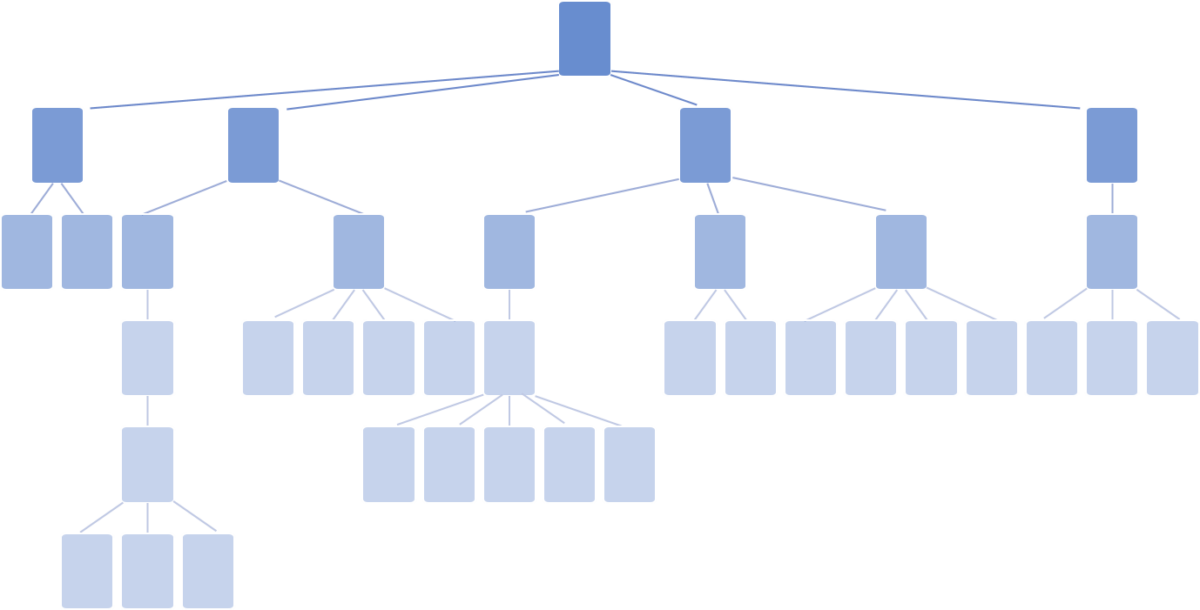One of the most common reasons for project trouble or failure is an unsuitably large project scope. The problem is not necessarily unrealistic goals or inadequate resources. When the large scope extends the project timeline far into the future, it risks becoming irrelevant before meaningful impact is achieved. External circumstances simply change and invalidate the original plans or assumptions.
We operate in a highly unpredictable environment. The increasing interest and practice of Lean and Agile methodologies is a clear acknowledgement of the unknowns and unknowables. Unable to predict the future with high confidence, we have to learn and adapt as we go.
How can individuals and organizations be more effective in dealing with this new reality?
In project management, multi-generational project planning is used to transform a large project into a series of smaller ones, each achieving a significant milestone relatively quickly. In addition, the lessons learned and knowledge acquired in each stage refine the goal and reduce the uncertainty in the subsequent planning and execution.
This is an example of analytical thinking — a critical competency of the project manager — which includes
- Breaking down a large, complex problem into smaller, manageable components
- Prioritizing the components based on a set of criteria, such as risk, effort, impact, and interdependency
- Sequencing the efforts in such a way that minimizes risk and cost while maximizing the desired outcome
In today’s work, analytical thinking is not just a required competency of project managers but any knowledge worker who has to solve technical or business problems. I use it as an essential criterion for evaluation of job candidates and development of employees.
Fortunately, everyone can improve their analytical thinking at work through continued learning and practice of some well-established conceptual frameworks and scientific methods, for example
1. Product development using Design of Experiments (DOE)
Frequently, there are numerous variables that we need to understand in order to design a product or process or improve its performance. When a one-factor-at-a-time or a full factorial design is not most effective, a screening design can be used first to identify the critical few among many potential factors. Then less resources are required to study the few more thoroughly, e.g. characterizing their interactions and the Response Surface, to achieve optimal outcomes. When designed strategically, each study augments the previous ones, avoiding unnecessary repeats.
2. Quality improvement by understanding variation
Reducing defects and improving customer satisfaction is a main goal of quality. Unfortunately, in many organizations, quality issues persist despite repeated improvement efforts. While subject matter expertise is important, sustained improvement requires understanding of process stability (i.e. lack of special cause variation) and capability (i.e. probability of the process producing a result that meets customer requirements). That is why process improvement methodologies, such as Six Sigma, rely on the principle of Statistical Process Control (SPC) to identify and separate special cause variation from common cause variation. Only after eliminating special cause variation, can we truly characterize and improve the process. Then, if necessary, we can improve process capability by reducing common cause variation and/or re-centering the process to the desired target.
3. Lead time reduction using Lean concepts
The ability to consistently design and deliver a product or service faster than competition is critical to business success. The lead time (e.g. request-to-delivery time) of many business processes remains long and variable. These processes often involve numerous and convoluted steps across multiple functions. It is impractical and unnecessary to analyze and improve all steps. Seeing from a customer’s perspective, Lean thinking brings us clarity by separating value-added from non-value added activities (i.e. waste) that impede the continuous flow of value to the customer. By reducing or abolishing waste, such as waiting, overproduction, and inventory, we can simplify and speed up the processes without investing in new capacity.
These are but a few examples in which proven scientific and management methods help break down complex problems into manageable components that lead to effective solutions.
Buzzwords like “work smart,” “be agile,” and “fail fast” may create the initial awareness or inspiration. But they rarely lead to operational effectiveness or material change. Building an organization that is Lean, Agile, responsive, or adaptive is transformative and requires systematic identification and development of required competencies, such as analytical thinking.
Adapting to a changing world is a challenge that demands analytical thinking as well. I am optimistic that individuals and organizations will continue to develop new competencies by embracing sound problem-solving methodologies.

